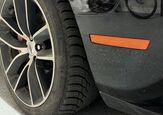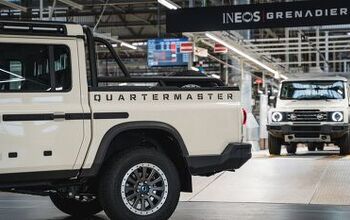TTAC Tips: How to Drag Race a Daily and Win

They say that drag strips are for fast cars, while racetracks are for fast drivers. That may be true, but this is a premier, top-shelf car enthusiast blog, however. We’re all friends here, and we’re all just delusional enough to believe – if only a little bit – that we were all but a go-kart or midget sprint or jr. dragster away from motorsports greatness at one point in our lives, and that’s the real allure of the drag strip: it’s an easily accessible, relatively affordable way to experience motorsports firsthand.
Ready? Let’s get started.
Get Yourself to a Drag Strip
Street racing is dangerous and stupid, full stop. No matter how “cool” you think you are or how good of a driver you imagine yourself to be, there are simply too many variables on the open road for you – or anyone else – to solve for. What’s more, street racing gives more responsible people who want to experience motorsports in a more controlled environment a bad rap, making it harder for everybody to enjoy their cars.
As the great Tym Switzer (Sr.) once told me, “Don’t be the asshole that takes out a bus full of crippled orphan children on their way to Disneyland.”
(Ed. note: This was posted under my byline by mistake, but Jo Borras wrote it. This has been fixed.)
You’re There, Now What?
Your first day at the drag strip – even if you’ve attended a few NHRA events and open “test and tune” days – is going to be a thing, but it shouldn’t be overwhelming if you go in prepared. In most cases, there will be an entry fee, a “pit” area that can feel like a glorified parking lot at some of the smaller tracks, and a tech or safety inspection that’s basically there to ensure that your car meets the bare minimum safety standards. It’s your first day at the track, though, so you’ll want to bring a car that’s been well-maintained, and that you can depend on to stay together when you jam on the throttle for a full quarter of a mile. Finally, you should show up in a car that you’re intimately familiar with.
That’s right, kids. I’m suggesting that you drag race your daily.
As tempting as it might be to finally get that project car out of the garage or drop the hammer on that rented Hertz Cobra. I have a few reasons for suggesting this. First, you’re going to dealing with a lot of firsts as it is – and, if you’re overwhelmed, you’re going to have a bad time.
The second reason is that metal and glass and plastic can get super stabby if a high-speed pass starts to go sideways (both figuratively and literally, in this case), so you’ll benefit from knowing if that tick, click, or pop you just heard is an OK tick, click, or pop or a harbinger of impending disfigurement, you know?
Finally, nothing says, “first time” quite like a mouse gray Honda Accord with a confused driver slowly motoring down the pit lane. So, again – and just this once – it is OK to race your daily.
As soon as you get sort of close to where you think you’re supposed to be, you’re going to take another big step: You’re going to ask for help.
I’m spelling this out because, in my experience, a lot of people spend their whole lives trying to appear competent. Trust me when I tell you, though, that drag racers are a warm, welcoming breed of hairless ape, and the mere fact that you’ve bothered to show up at the strip at all means you’re probably not all bad. Ask the people around you if you’re in the right place, where you should go, how to line up at the lights – ask people literally every question you have, even you think you already know the answer. You’ll probably make a friend or two, sure, but the real benefit is that you’ll cut down the time spent on the steepest part of the learning curve, and get to the fun part that much sooner.
Prepare to Win
Look at you – you’ve made it through the gates, passed the safety inspection, made your way to the pits, and asked around enough to get yourself into line, and you did what the officials told you to do like a good boy/girl/whatever. You’ve made it to the tree. You look out your side window at the screaming, tire-shredding torque beast lined up alongside you and smile. You’d never beat that animal in a straight race behind the wheel of your Camcord or Explorokee or Odysienna, and losing sucks. You’re not here to suck and fail, though, you’re here to win and have fun and to watch the other guy suck and fail – and you’re going to do just that because your first drag race ever is going to be a bracket race.
Bracket racing is a nuanced thing, but it can be explained very simply as, “you’re trying to get the same time, every time, without going under.”
On your first and maybe second pass, you’re trying to get “dialed in”, which means that you’re setting a target time that you’ll be able to repeat again and again. Let’s say you’ve got one of those three-row Jeep Grand Cherokees Tim reviewed a while back. That SUV should be good for a 15.7-second quarter-mile pass, but you’re not going for a fast time – you’re going for a repeatable time. You’re going to breathe easy, roll into the throttle, and keep your foot to the ground the whole way down the track.
If you did the thing right, you’ll find your Jeep will run somewhere in the mid-to-high 16s. Let’s call it 16.5 for the sake of easy math.
So, you’ve got a target of 16.5 seconds. The guy next to you revving the absolute piss out of that SBC Fox-body? He’s got a dialed-in time of 12.0 seconds. That means that your light will go green, then –four-point-five seconds later – his light will go green, and whoever crosses the line first (without going faster than their dialed-in “target” time) is the winner.
Sure, there’s a bit of a “the Price is Right” element to it, but your well-maintained and stone-ax reliable daily driver has every advantage over any of the tweaked and tuned cars that might line up alongside it in a bracket race, and the only thing holding it back in its inevitable triumph of predictability is you. You will have to dial it in properly, perform consistently, avoid getting emotional, and maintain your focus … just like a for-real racecar driver.
Did You Catch the Racing Bug?
Once your first day at the drag strip is all wrapped up, one of two things will probably happen. You’ll either check “drag race” off your bucket list and move on to trying exotic cat poop coffee or skydiving or riding a bull named Fu-Manchu – or you’ll immediately start thinking about your next day at the track. If there’s bound to be a day two, and you can see yourself at day thirty-seven, it’s time to start reading more of Murilee Martin’s posts and start scouring the scrapyards for a project car. Be warned, though: this is big-boy territory, and this particular addiction gets real expensive, real quick.
[Image: Bordovski Yauheni/Shutterstock.com]

I've been in and around the auto industry since 1997, and have written for a number of well-known outlets like Cleantechnica, the Truth About Cars, Popular Mechanics, and more. You can also find me talking EVs with Matt Teske and Chris DeMorro on the Electrify Expo Podcast, writing about Swedish cars on my Volvo fan site, or chasing my kids around Oak Park.
More by Jo Borras
Latest Car Reviews
Read moreLatest Product Reviews
Read moreRecent Comments
- MaintenanceCosts Poorly packaged, oddly proportioned small CUV with an unrefined hybrid powertrain and a luxury-market price? Who wouldn't want it?
- MaintenanceCosts Who knows whether it rides or handles acceptably or whether it chews up a set of tires in 5000 miles, but we definitely know it has a "mature stance."Sounds like JUST the kind of previous owner you'd want…
- 28-Cars-Later Nissan will be very fortunate to not be in the Japanese equivalent of Chapter 11 reorganization over the next 36 months, "getting rolling" is a luxury (also, I see what you did there).
- MaintenanceCosts RAM! RAM! RAM! ...... the child in the crosswalk that you can't see over the hood of this factory-lifted beast.
- 3-On-The-Tree Yes all the Older Land Cruiser’s and samurai’s have gone up here as well. I’ve taken both vehicle ps on some pretty rough roads exploring old mine shafts etc. I bought mine right before I deployed back in 08 and got it for $4000 and also bought another that is non running for parts, got a complete engine, drive train. The mice love it unfortunately.


































Comments
Join the conversation
Real stupid question incoming. What gear should you start in off the line? Everytime I watch a drag race on YT the revs are so high I can't imagine myself getting any traction off the line in first. Do/can people start in 2nd? Is it supposed to be in 2nd, or do you just figure it out in 1st?
This article is all well and good, but what kind of safety gear would a first-time daily-driver bracket-racer be expected to bring to the track? Does the car need to be modified in any way to be safe on this particular kind of track? (As a green-car guy, I don't follow racing closely -- but I do see how it could be fun, and how the kind of cars I like could be competitive in bracket racing.)